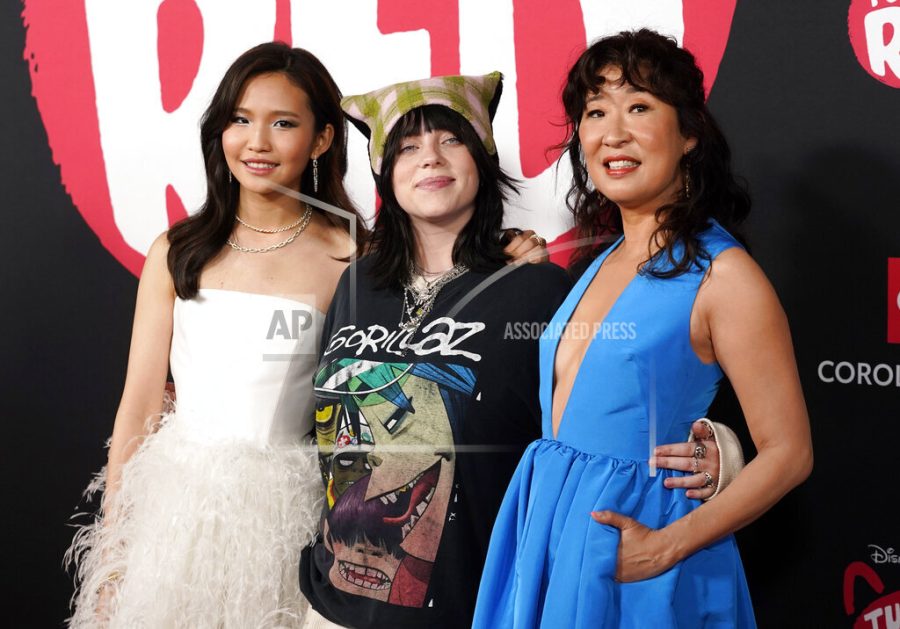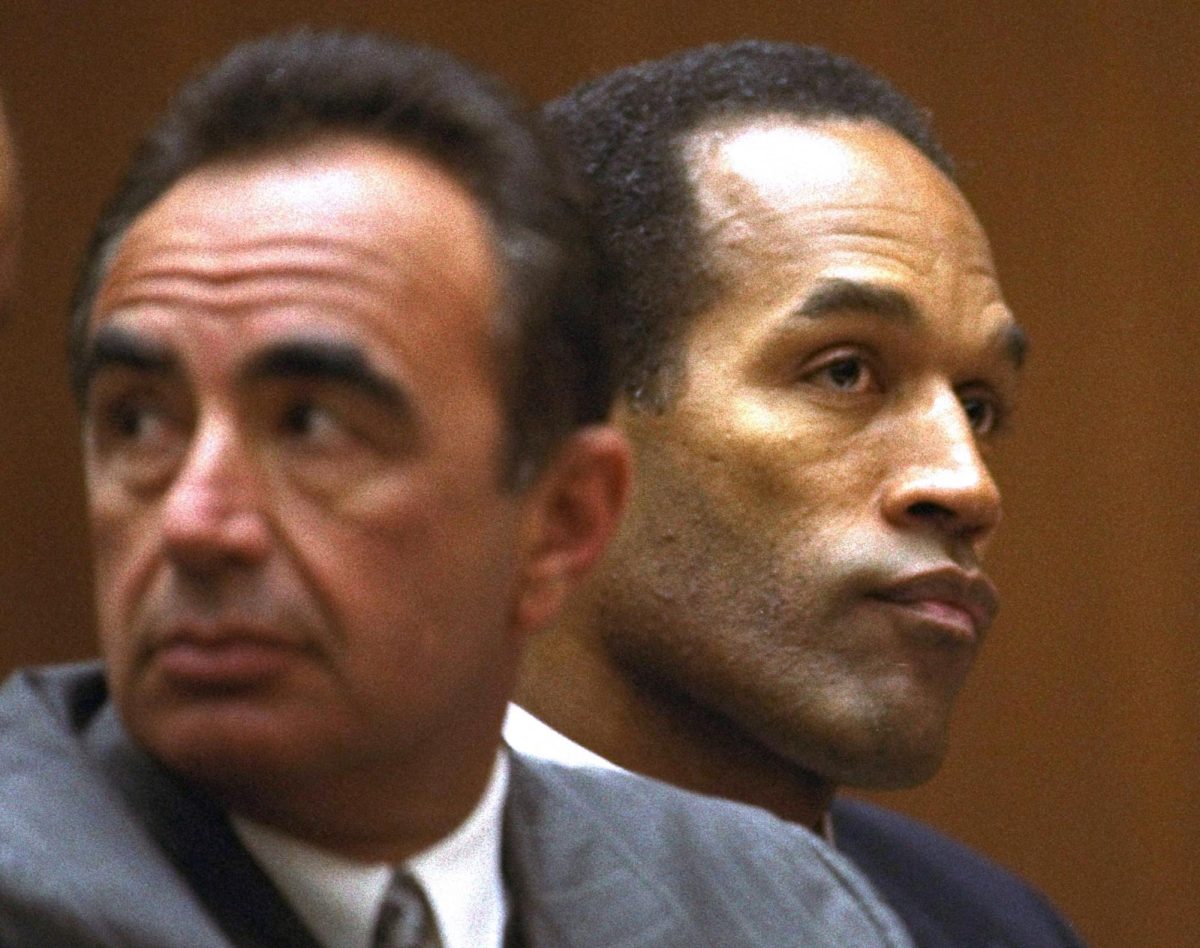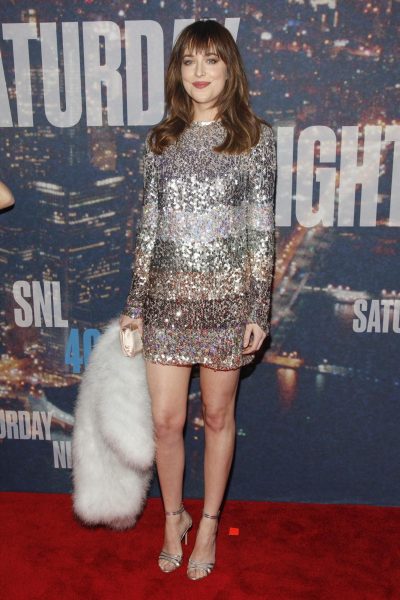‘Turning Red’ is a Warm and Fluffy Movie with Sharp Teeth
Billie Eilish, center, who co-wrote original songs with her brother Finneas for the animated film “Turning Red,” poses with cast members Rosalie Chiang, left, and Sandra Oh at the world premiere of the film, Tuesday, March 1, 2022, at the El Capitan Theatre in Los Angeles. (AP Photo/Chris Pizzello)
March 25, 2022
When you think of a Disney movie, the first thing that comes to mind is likely something along the lines of a prince saving a damsel in distress while breaking into song and dance.
Disney has been shifting from this reputation, however, after the release of their three most recent animated movies: ‘Luca,’ ‘Encanto’ and ‘Turning Red.’ The last of which was released in theaters on Feb. 21 and on Disney+ on March 11.
While there are some aspects of the unnatural, fantastical journeys and magical powers are not the focus of these films. They address more significant issues that most, if not all, viewers can relate to in some way.
‘Turning Red’ follows teenager Melin Lee as she navigates school, work and her family. She is a rule-follower and people pleaser, and she is always looking for her parents’, specifically her mother’s, approval.
When Melin learns that all the women in her family have the ability to turn into a red panda, she is forced to use the support of her friends to handle big emotions.
She also must decide if she will do as her relatives did and contain the panda in a ritual during the red moon, or if she will embrace her panda, learning to live harmoniously with it.
The plot of the movie has two interpretations, one literal and one metaphorical. However, understanding both is integral for getting all that the movie has to offer.
The literal interpretation of the movie is that Melin actually turns into a red panda, an ability that was given to one of her ancestors to protect her children.
This is just part of the education about Chinese culture the movie provides.
Melin’s family runs a temple in Toronto, Canada. Though it is used partly as a tourist attraction, the movie depicts the Lee family praying and honoring their ancestors.
The accuracy of this depiction is likely due to the director, Domee Shi, who is the first Chinese woman to direct an animated Disney movie.
She said in an interview with NBC that she hopes that young Asian children will watch the movie and see that it is not possible to obey and honor their parents all the time. They will mess up, and it will be okay.
She also said that the movie highlights the ups and downs in the relationship between parents and children, specifically immigrant parents and children.
“I think [Melin] has come to realize that there is no perfect relationship with your parents, that it is always going to be messy,” Shi said.
Although this lesson was primarily meant for Asian children, it is valuable to children of other races as well.
The metaphorical interpretation, which is supported by other direct references, is that the red panda represents puberty.
Instead of the red panda being a furry creature, it is the physical and emotional changes that occur when a teenager goes through puberty, specifically when they get their period.
From this angle, the movie teaches the importance of leaning on friends in times of big emotions.
Melin’s red panda is triggered by these big emotions, so she looks to her friends for guidance and comfort, which ultimately allows her to live at peace with her panda.
Besides the metaphorical education on puberty, the movie had several scenes representing puberty in ways I have never seen in a Disney movie before.
In the beginning of the movie, Melin’s mom, Ming Lee, catches her drawing pictures of her and her crush, fantasizing about being with him.
While this situation does not seem inappropriate considering Melin’s age, no Disney movie has shown a teenager thinking of their crush in any way but youthfully and innocently.
Later in the movie, when Melin first wakes up as a panda, she hides in the bathroom from her parents, hoping to return to her normal self.
While Ming suspects something is amiss with her daughter, she assumed it was her period rather than becoming the red panda.
She brings a box of supplies containing pain medication, a heating pack and a variety of pads for Melin to choose from as she reassures her daughter that all will be okay.
Periods are nothing to be ashamed of and nothing inappropriate to talk about, but I have yet to see a Disney movie where they are discussed.
I think this scene, though short, is valuable for young menstruators watching. Periods are highly stigmatized in today’s society. By making the topic not as big of a deal, Shi took strides to normalizing periods for young viewers.
According to an interview by NBC of Rosalie Chiang, the voice actress of Melin, despite the movie depicting Chinese culture and periods, it appeals to all viewers.
“This is a coming of age film, everyone goes through this change…,” Chiang said. “I think different people of different cultures are going to go through it differently, but at the end of the day, the core messiness and change is something everyone can relate to.”























